History of success with Indigenous partners.
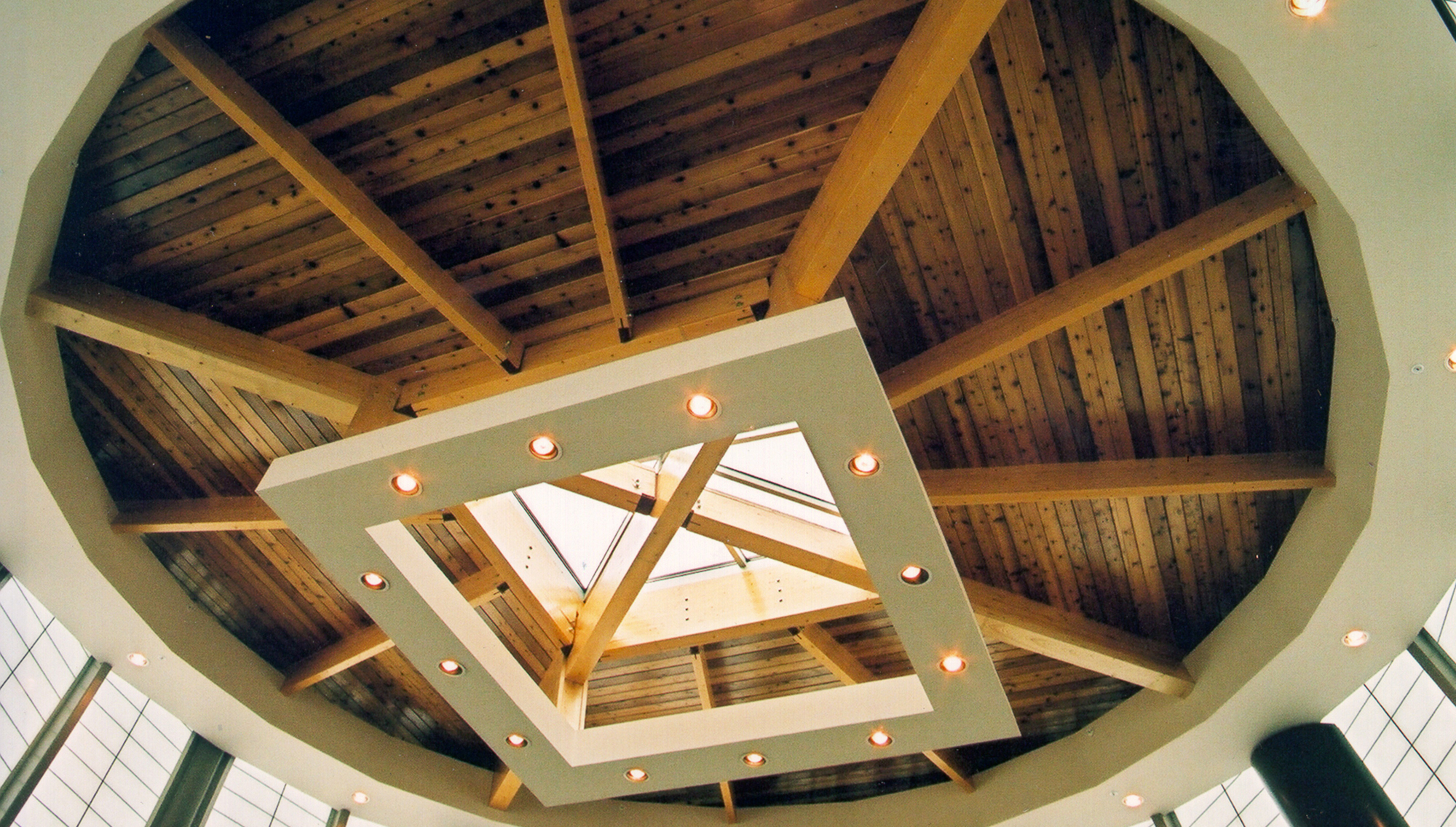
Throughout our history, JEN COL has forged a significant path by collaborating closely with Indigenous communities on various successful projects. Grounded in principles of respect, mutual benefit and cultural sensitivity, we find ourselves at the forefront of sustainable development and community empowerment. By engaging Indigenous workers, respecting traditional lands and incorporating local knowledge into their projects, JEN COL not only contributes to the economic growth of Indigenous communities but also learns and grows from the rich cultural exchanges that occur.
Partnering with Indigenous communities has enabled the creation of a multitude of opportunities for Indigenous peoples within their territories, aligning with JEN COL’s commitment to social responsibility and economic participation. This commitment is reflected in projects that maximize local involvement and ensure all employees and subcontractors understand the importance of engaging with Indigenous communities.
We have seen a positive trend in building relationships with Indigenous people; from hiring Indigenous workers, sourcing from Indigenous businesses and investing in community initiatives. This has been a result of a concerted effort to understand and integrate Indigenous perspectives and needs into business operations, leading to shared success and prosperity.
Since our inception, JEN COL has successfully completed numerous projects with our Indigenous partners. These examples illustrate how we can play a pivotal role in supporting Indigenous communities through thoughtful engagement and partnership. By doing so, we not only contribute to the infrastructure and economic development of these communities but also set a precedent for how industries can work alongside Indigenous peoples to create a future that honours tradition, respects the environment and fosters mutual success.
- Alexander K-12 School (Kipohtakaw Education Centre), Alexander First Nation (under construction)
- Assumption Health Care Centre, Dene Tha’ First Nation
- Assumption School Modernization, Dene Tha’ First Nation
- Beaver First Nation Health Centre, Beaver First Nation
- Caslan School, Lac La Biche School Division
- Dene Tha’ Community School, Dene Tha’ First Nation
- Desmarais Vocational College, Alberta Public Works
- Duffield Health Care Centre, Paul First Nation
- Enoch Health Centre, Enoch Cree Nation
- Fort McMurray 468 First Nation Community Building, Fort McMurray, AB (under construction)
- Fox Lake Elementary School, Little Red River Cree Nation
- Ironhead Golf & Country Club, Paul First Nation
- Meander River Health Centre, Dene Tha’ First Nation
- Meander River School Modernization, Dene Tha’ First Nation
- Mimiw Sakahikan School, Nipisihkopahk Education Authority
- Saddle Lake Onchaminahos Elementary School, Saddle Lake Cree Nation
- Samson Cree Water Treatment Plant, Samson Cree Nation
- Saulteau Cultural Centre, Saulteau First Nation (under construction)
- South Tallcree Health Centre Renovations, Tallcree First Nation
- Stoney Medicine Lodge Renovation, Stoney Nakoda First Nation
- Sturgeon Lake Health Centre, Sturgeon Lake Cree Nation
- Sucker Creek Health Centre & Multipurpose Facility, Sucker Creek First Nation
- Swan River Water Treatment Plant, Swan River First Nation
- Theresa C. Wildcat Early Learning Centre, Maskwacîs Education School Commission
- Tsuut’ina Health Centre Renovation, Tsuut’ina Nation
- Whitefish Health Centre, Whitefish Lake First Nation
- Woodland Cree Health Centre, Woodland Cree First Nation
JEN COL is A True Indigenous Construction Partner… learn more.
Pilot Sound Fire Station No. 30
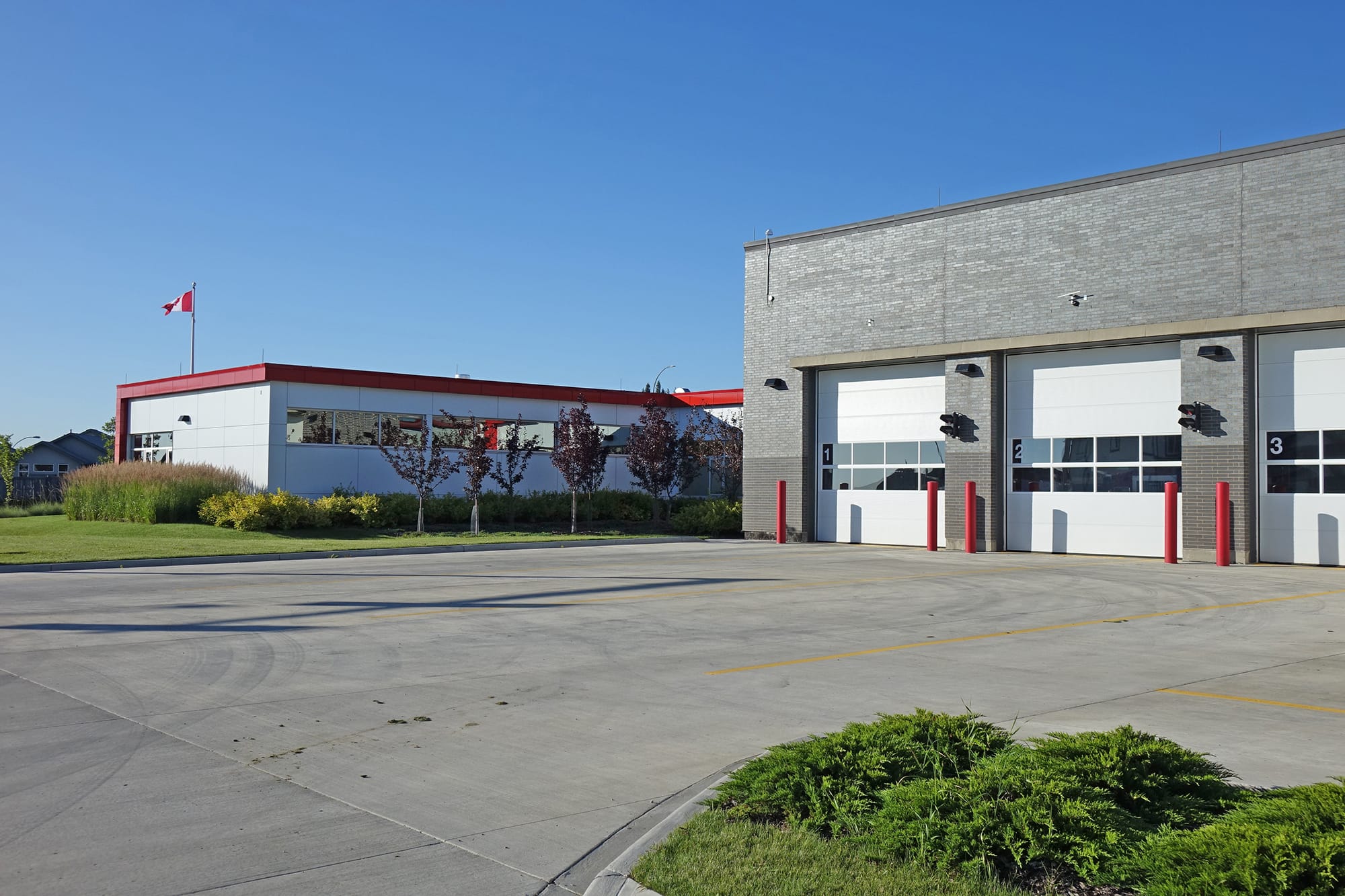
JEN COL Construction was contracted to build Edmonton’s 30th fire station, the new Pilot Sound Fire Station located at 15850 – 50 Street which is part of the Pilot Sound residential community encompassing seven neighborhoods in the city’s northeast corner. With a total building area of 1,226m², the fire station contains three drive-through apparatus bays, dispatch, dorm rooms, a kitchen, a lounge, an exercise room, offices, change rooms, washrooms and service, utility and storage spaces. One of the biggest features is an external duty gear storage room which is completely isolated from the main living area – great from a firefighter health and safety perspective.
This fire station is a wood frame construction, one of the first for the City of Edmonton, with exposed glulam beams and timber decking throughout the facility, including the apparatus bay and the dormitory, kitchen and exercise areas. The project also included site work, utility connections, landscaping, fencing, curb crossing and roadway improvements.
The Pilot Sound Fire Station project, which achieved LEED® Silver Certification, incorporates a variety of important sustainability strategies including water conservation, bioswales, high-albedo site paving materials, building orientation, natural lighting, advanced ventilation and drought-tolerant planting. Canada Green Building Council’s Leadership in Energy and Environmental Design New Construction (LEED-NC) Silver-rating-certified buildings reduce waste, conserve energy, decrease water consumption and drive innovation through better air ventilation, more natural daylight and several other innovative techniques.
Performing Arts Theatre of Hinton
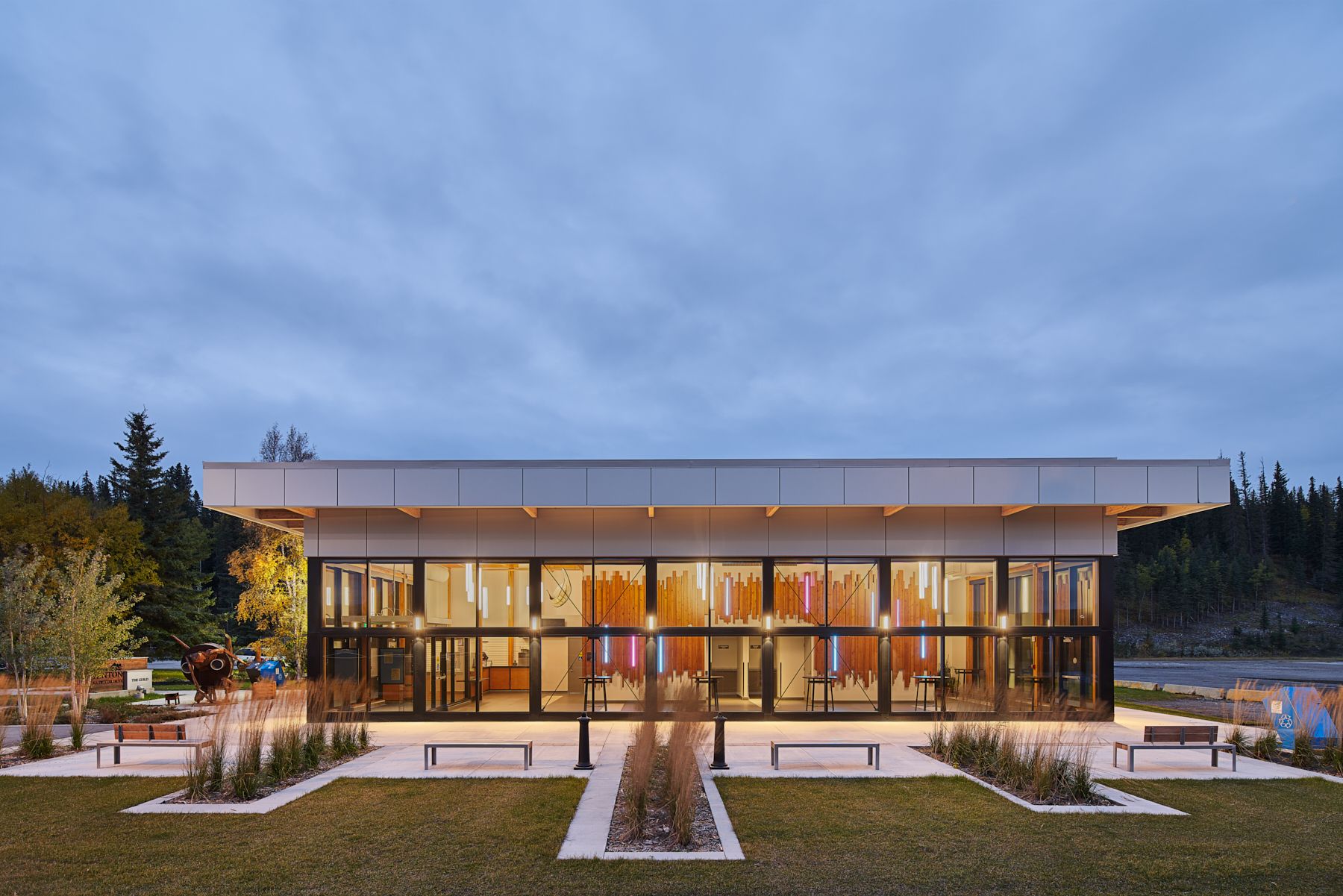
Located about 285 kilometers west of Edmonton, the Town of Hinton enjoys a rich quality of life bolstered by an ardent arts and culture scene. In fact, Hinton is home to nearly 25 cultural organizations – the majority of which are in the performing arts.
In 2015, Hinton Town Council had the vision to create a multi-use facility as a home for theatre production, cinema, lectures and exhibits. This new venue would replace the Roxy Theatre & Performing Arts Centre – devastated by fire in 2009 – which played host to thousands of musical and theatrical performances, festivals and movies since the early 1950s.
With a touch of irony, the new Performing Arts Theatre of Hinton (PATH) along Switzer Drive was converted from an older Fire Hall/RCMP building. The two-phase project included the construction of a new Visual Arts/Pottery Studio – a 115m² community-use building offering space for local artists to hone their craft and share their work – and secondly, a 1,369m² addition and renovation of the existing Fire Hall into a new 170-seat performing arts theatre and cinema.
The fire truck apparatus bays were converted into the theatre with a specialty wood stage and retractable seating to increase the number of potential uses for the space. The primary addition to the building houses the lobby, washrooms and a second-floor sound and data mezzanine. This addition was an exposed wood glulam structure with large windows and a fully functioning bar and concession. A second wood glulam addition to the facility houses the theatre’s back of house space and features a large overhead door allowing productions to easily move stage equipment in and out of the facility. The entire project was outfitted with upgraded finishes and fixtures to provide an upscale atmosphere as soon as patrons walk in the door. To help set the mood for the various events hosted at the PATH, recessed LED fixtures were added in the walls throughout the lobby and theater which can be programmed to any colour and brightness.
The PATH project was nominated for the 2019 Prairie Wood Design Awards in the Institutional Category and is now identified as a destination for performing arts and theatre.
Theresa C. Wildcat Early Learning Centre
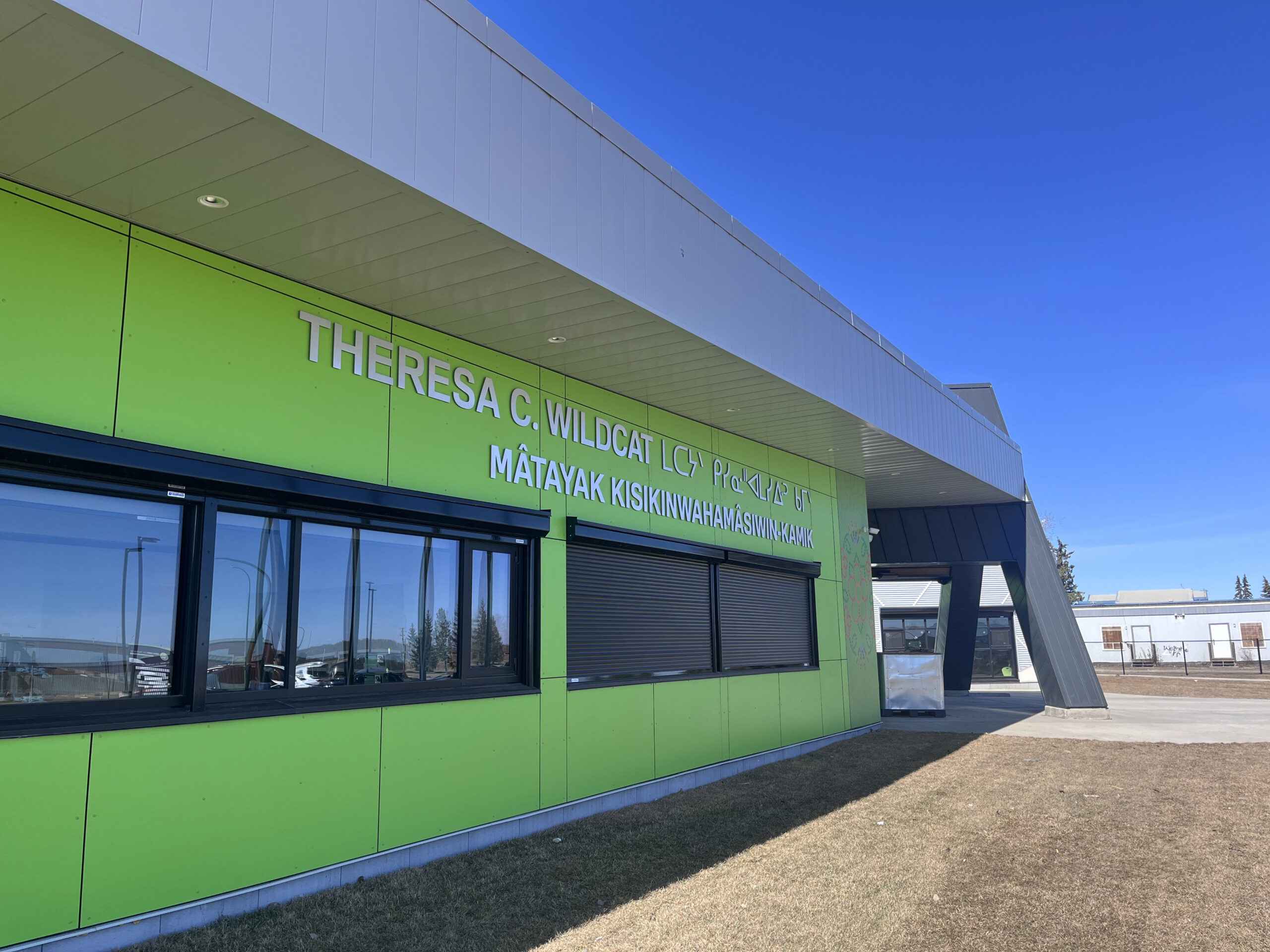
This new building is located just southeast of the existing kindergarten school. The new 2,900m2 early learning facility welcomes the community’s children during the most important learning years of their lives to help create a strong foundation for learning today and for success later in life. The school honours First Nation culture and traditions and will serve the community for many years to come. JEN COL partnered with the community, the Maskwacîs Education Schools Commission and the Maskwacîs Employment Centre on recruitment campaigns to identify potential candidates and to make candidates aware of job opportunities throughout the construction of the project.
JEN COL is A True Indigenous Construction Partner… learn more.
St. Kateri Tekakwitha Academy
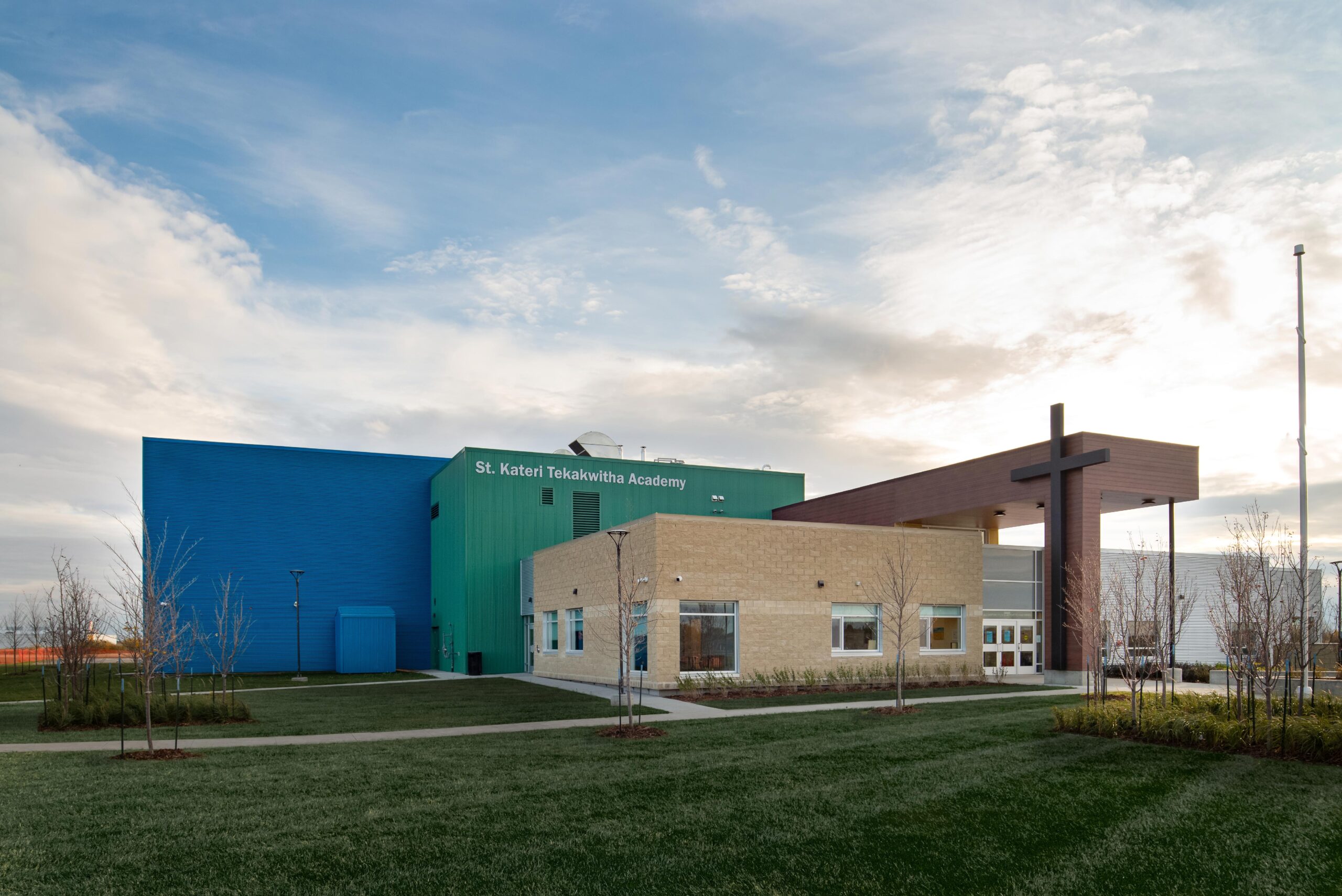
St. Kateri Tekakwitha Academy is a new pre-K to Grade 5 school constructed on a greenfield site in the new Westwinds subdivision in the Town of Morinville. It is the first school the Greater St. Albert Catholic School District has built in the Town since Morinville Community High School opened in 1994. The Academy addresses current and future growth at the elementary level and includes a sports academy focusing on gymnastics, cheer, dance and hockey, with a strong emphasis on academics.
This 3,158m² facility has been designed and constructed to meet LEED® Silver with capacity for 350 students. A unique—and sustainable—feature of the Academy are the solar panels on the exterior and interior of the building where students can use mobile solar panels and software as part of lessons on tracking energy production and use.
The school’s main hall gathering space for students and staff has a wood-patterned floor and ceiling to resemble an Indigenous longhouse, and the front office is brown to reflect St. Kateri’s artisan skills as a basket weaver. The school’s grades are divided into three color-coded pods and classrooms in each pod have garage-door walls that spill into common areas when open.
Corpus Christi Catholic School
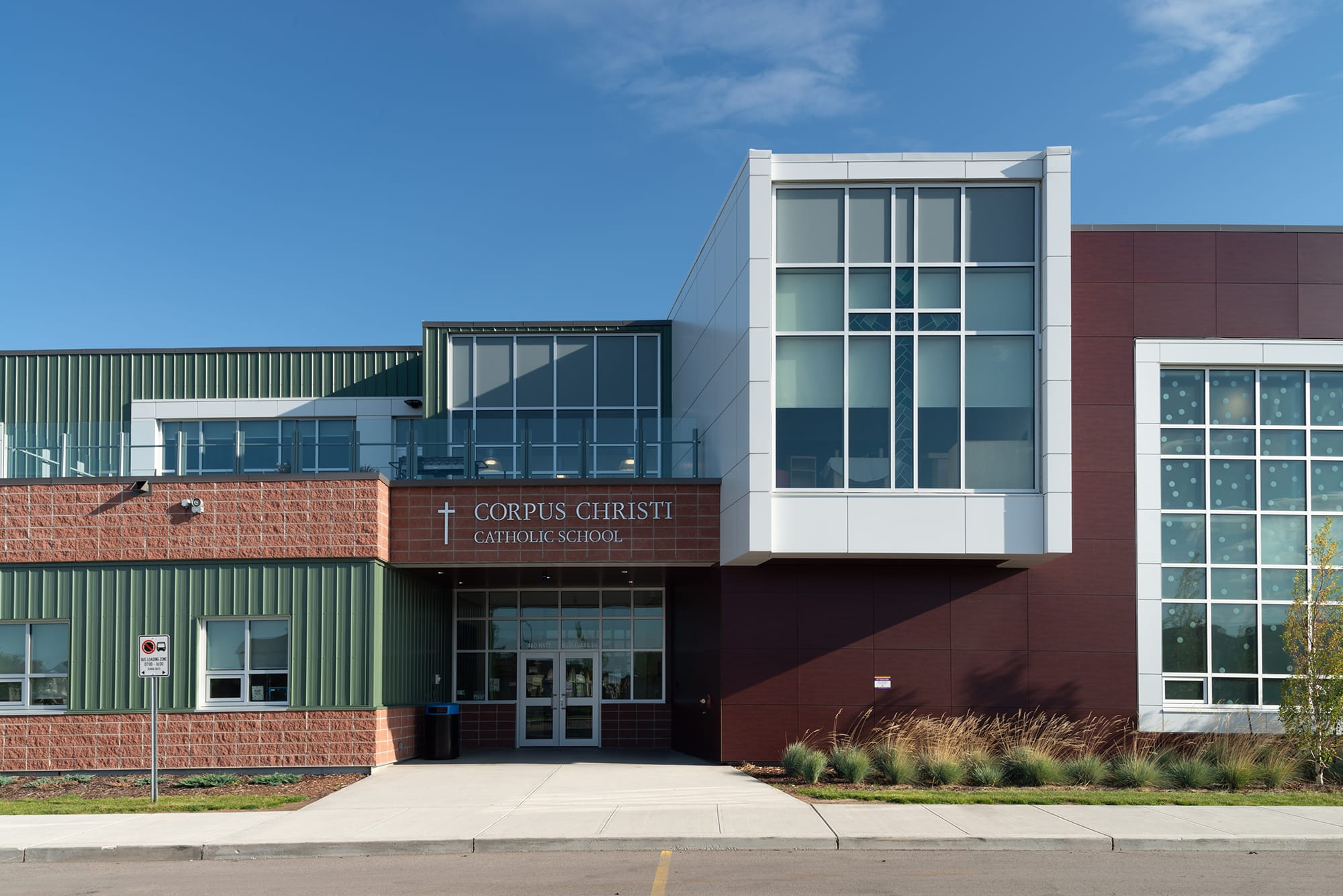
In 2014, Edmonton Catholic Schools announced a new kindergarten to Grade 9 school would be built in southeast Edmonton to serve the Walker neighbourhood (located in the Ellerslie and Summerside area). This school has a planned occupancy of 750 students with room to add up to ten modular units in addition to the core facility.
The new building has 31 classrooms including science labs and Career and Technology Studies (CTS) workrooms, two gymnasiums, a servery kitchen and a two-storey learning commons to unify the three school divisions in an interactive, multipurpose program area. The school’s two-storey design helps maximize the efficiency of the building, maximize outdoor activity space and allow appropriate separation of grade structure based on division.
High-quality finishes around the school include cork floor tile in the music rooms, wood grain metal ceiling clouds throughout the building, full-height glazing walls in both gymnasiums for spectator viewing from both the main and the second floor, as well as polished concrete throughout the school for added durability and lower maintenance costs.
Corpus Christi Catholic School successfully achieved LEED® Silver Certification. The use of natural lighting throughout the building, a well-designed heating and cooling system and low flow fixtures were all contributing factors. Canada Green Building Council’s Leadership in Energy and Environmental Design New Construction (LEED-NC) Silver-rating-certified buildings reduce waste, conserve energy, decrease water consumption and drive innovation through better air ventilation, more natural daylight and several other innovative techniques.
Borden Park Pavilion
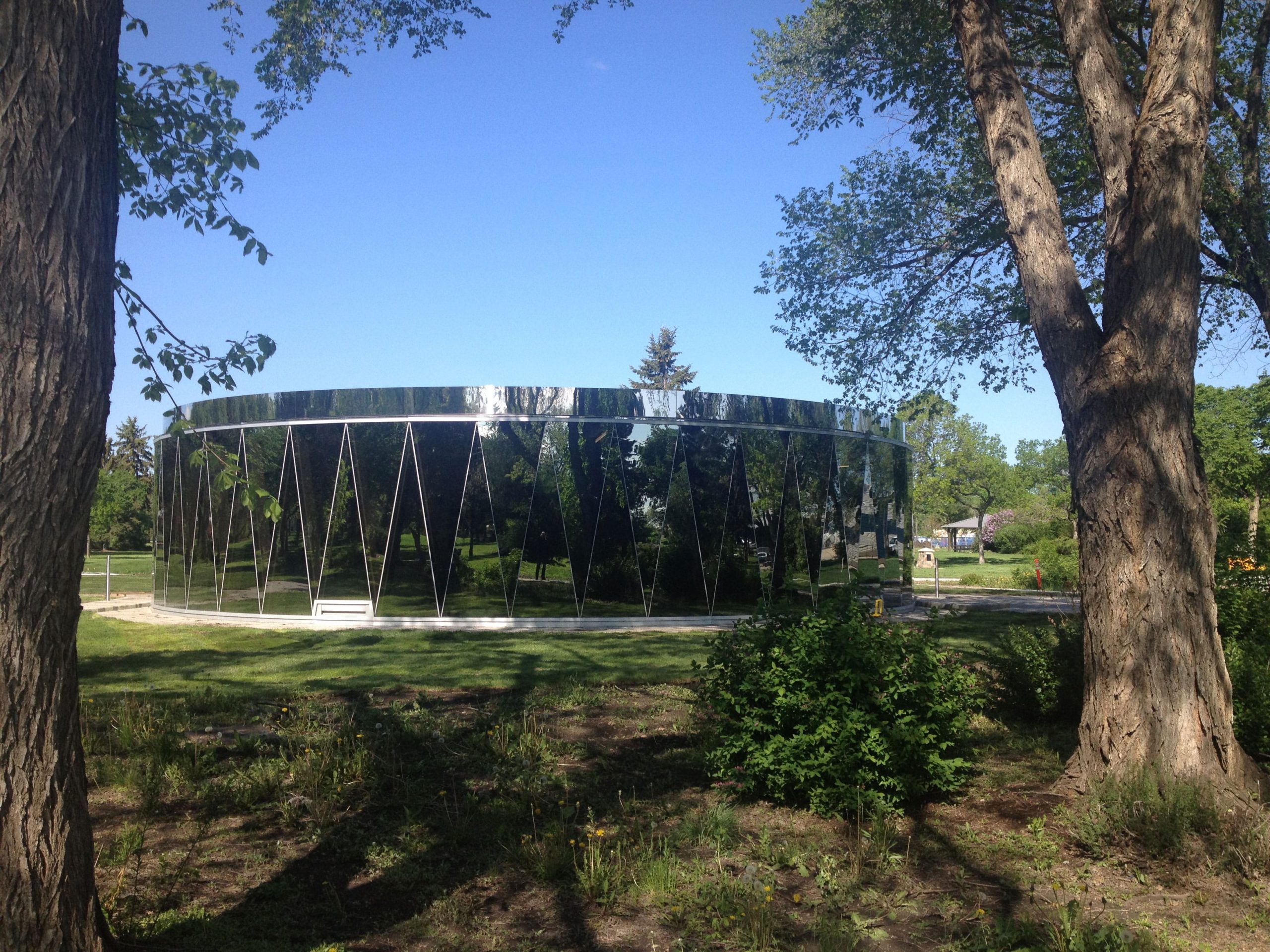
Named after Canada’s eighth prime minister—Sir Robert Borden—Borden Park in the early 1900s was Edmonton’s playground, complete with merry-go-round, a giant wood rollercoaster, a zoo, cricket pitches, baseball diamonds, a tearoom, fountains, a band shell and, of course, a hockey rink.
The City was looking to honor the park’s history and glory; this was accomplished by constructing a drum-like structure to evoke amusement park images of carousels and ferris wheels. During the day, the Borden Park Pavilion blends so well into the scenery it almost disappears into the scenery while in the evening, it lights up, resembling a cross between a toy drum and a lantern. Floor-to-ceiling glazing allows captivating views into, through and out from the pavilion, reflecting the surrounding park and seasons in striking triangular facets.
This award-winning structure is designed for openness and flexibility. The enclosed portions of the pavilion, such as the staff program rooms, mechanical room, janitorial room and washrooms are organized in a central core. Tables and stools are embedded into the concrete floor and window benches are built into the base of the framework providing additional seating. The use of glass, wood and concrete for the pavilion were selected for their sustainability, durability, permanence and timelessness.
Awards:
• 2015 City of Edmonton Urban Design Award
• 2016 Prairie Design Award
• 2016 Prairie Wood Design Award of Excellence
• 2018 Governor General’s Medal in Architecture
And if these awards aren’t enough… the Borden Park Pavilion’s claimed the title for Canada’s Best Restroom in 2021! What made it the best in Canada? Learn more about it here.
Fox Lake Elementary School
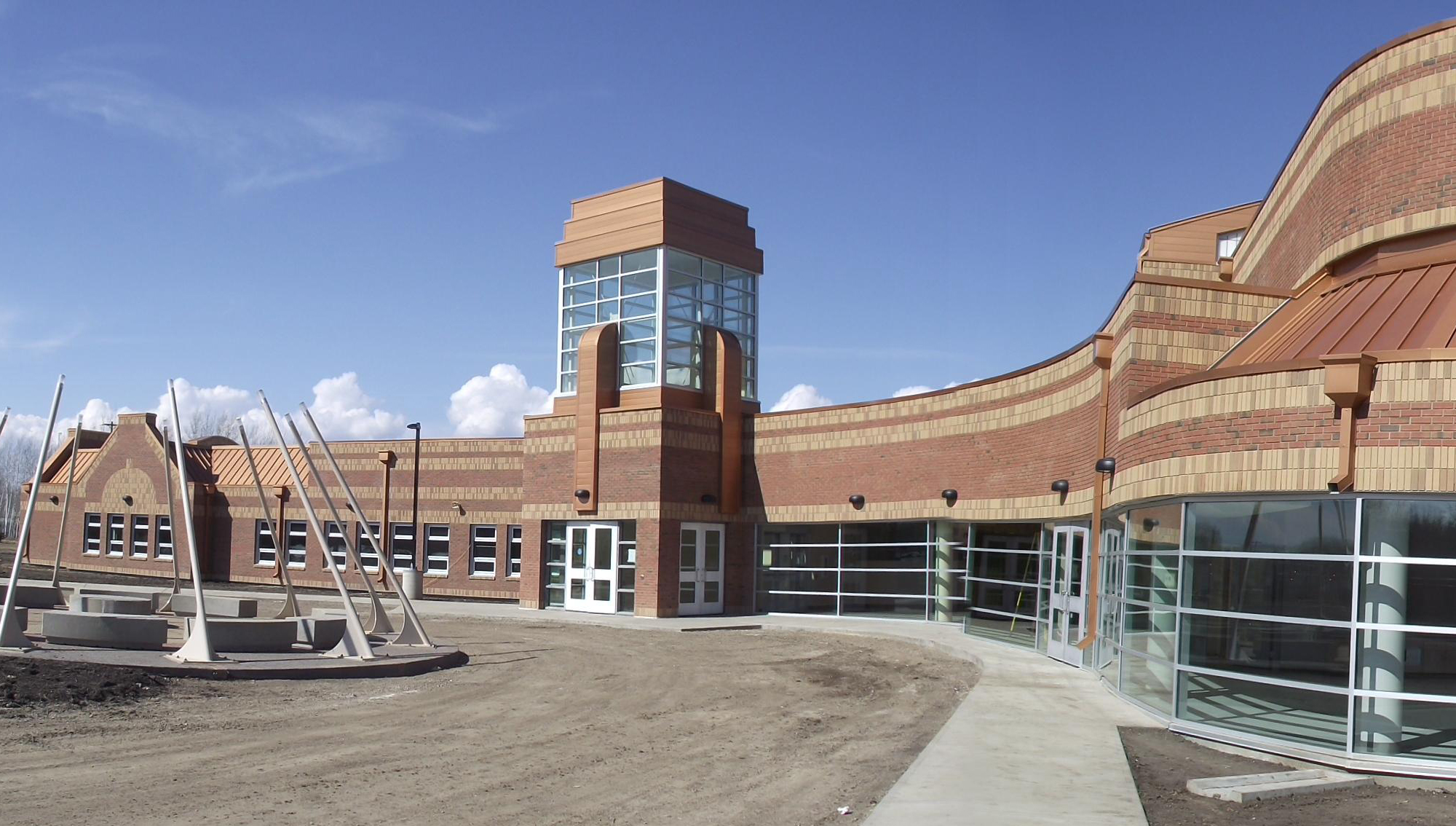
Fox Lake Elementary School (formerly Jean Baptiste Sewepagaham School), a 4,866m² elementary school located in one of Canada’s most remote communities south of the 60th parallel, is only accessible by air, over a 1.1 km-long ice bridge in the winter and by a small barge in the summer. In fact, at the project’s inception 1,200+ trailer loads of materials and equipment were shipped across the ice bridge to allow for construction to seamlessly move forward in the summer season. At the time, this project was the largest and highest risk in Canada’s Economic Action Plan (CEAP) and the isolation constraints, complexity of design and CEAP deadline of March 31, 2011 made this an extremely interesting project.
JEN COL’s strong partnership with the Little Red River Cree Nation fostered collaboration on the extensive civil scope, camp facilities, apprenticeship and training of local members and use of local equipment, making this a true “Community’s School.” This relationship and understanding between owner and construction manager allowed the project to finish on time and on budget even with some unique circumstances and constraints.
This project had the attention of the Federal Directors and Ministers for Indigenous and Northern Affairs Canada (now Crown-Indigenous Relations and Northern Affairs Canada). On their site tour, the overwhelming response was, “an amazing facility and unbelievable it was completed on time, considering the logistics.”
Project Awards:
2015 Alberta Masonry Award for Structural Masonry Design
Glenmary School

Glenmary School in Peace River, Alberta was originally built in 1964 with four classrooms and a small gymnasium. Sister Gillespie, a teacher at the school came up with the name Glenmary, “Glen” came from the area of town called Glenview and “Mary” was carefully selected as a devotion to Mary Mother of God. Over the years, additions to the school were built in 1966, 1970, 1980 and 1988.
In 2016, JEN COL Construction was awarded the contract to complete a 5,924 m2 modernization and 437 m2 addition. This included construction of a new Career and Technology Studies (CTS) lab with large overhead doors, a new space for the school’s art program, a series of new science labs and a two-storey aesthetics salon (named the EvelineCharles Peace River Academy). Renovations were also made to classrooms, the library, drama room, music room, staff room, meeting spaces, administration area and washrooms. This project was completed while the school remained occupied by staff and students and was organized into phases to allow the school to remain open and fully operational.
JEN COL was also contracted to install new seating in the theatre as part of a separate contract and returned in 2019 to install solar panels on the school to harness the sun’s power by converting it into 120-volt power to be used as needed to reduce their carbon footprint.
Fire Rescue Services Norwood Station No. 5
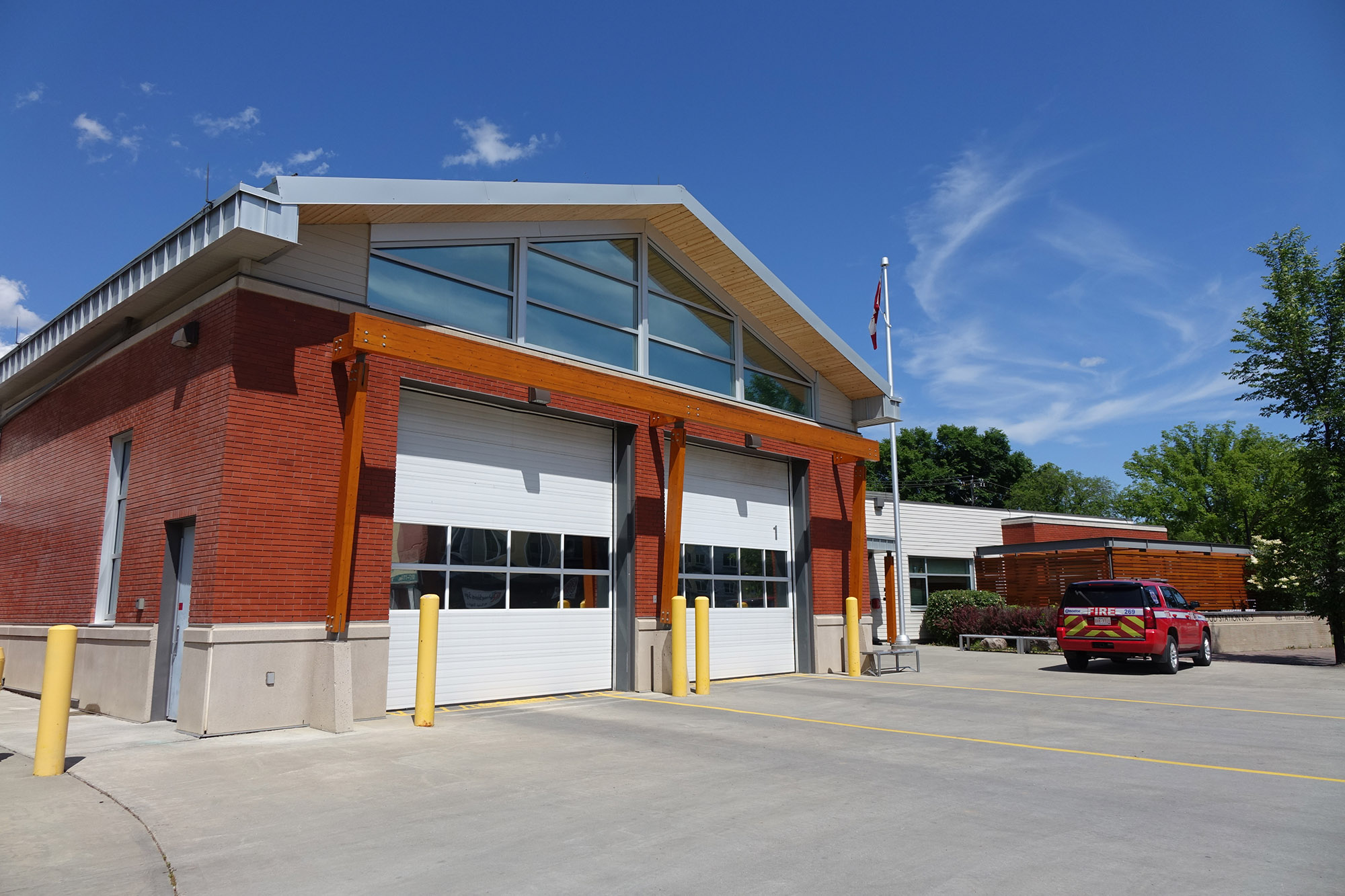
The original Norwood fire hall in north Edmonton began operations in 1911. Ninety-nine years later – and just a few blocks away – the new Fire Rescue Services Norwood Station No. 5 opened its doors to serve the community.
Construction of the two-bay fire station began in 2009 using a traditional design with exposed glulam trusses and wood decking as part of the architectural feature for the apparatus bay ceiling along with a ground concrete floor finish throughout the facility. The station consists of large equipment and apparatus bay, communal kitchen, recreation and exercise rooms, shower facilities and private dorm rooms.
With an eye on environmental sustainability, high performance mechanical and electrical systems and building envelope design combined with environmentally friendly, durable and locally manufactured materials were used. A rainwater recovery system was also designed to recover rainwater from the building’s rooftop to be stored in a large underground cistern. Through effective construction waste management, 94% of the project’s waste was diverted from landfills. This project became LEED Certified by CaGBC in 2015.
The site is in a mature neighborhood and maintaining a good relationship with the community and protecting mature trees was paramount. As part of a Municipal Improvement Agreement and in conjunction with the City of Edmonton, the roads and sidewalks in the adjoining neighborhoods were also reconstructed.